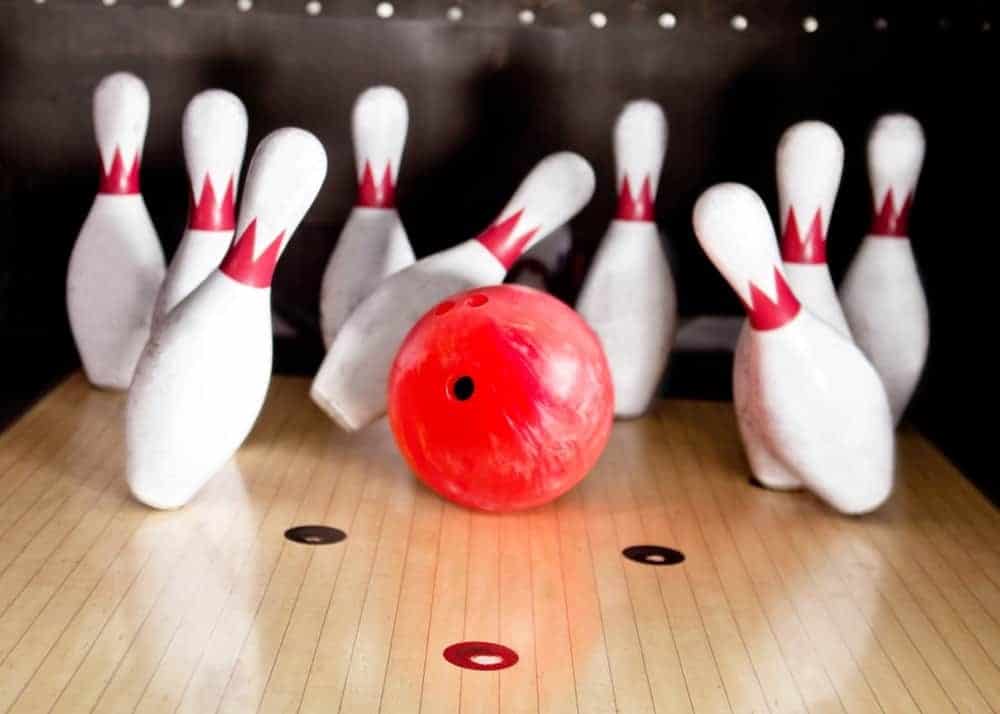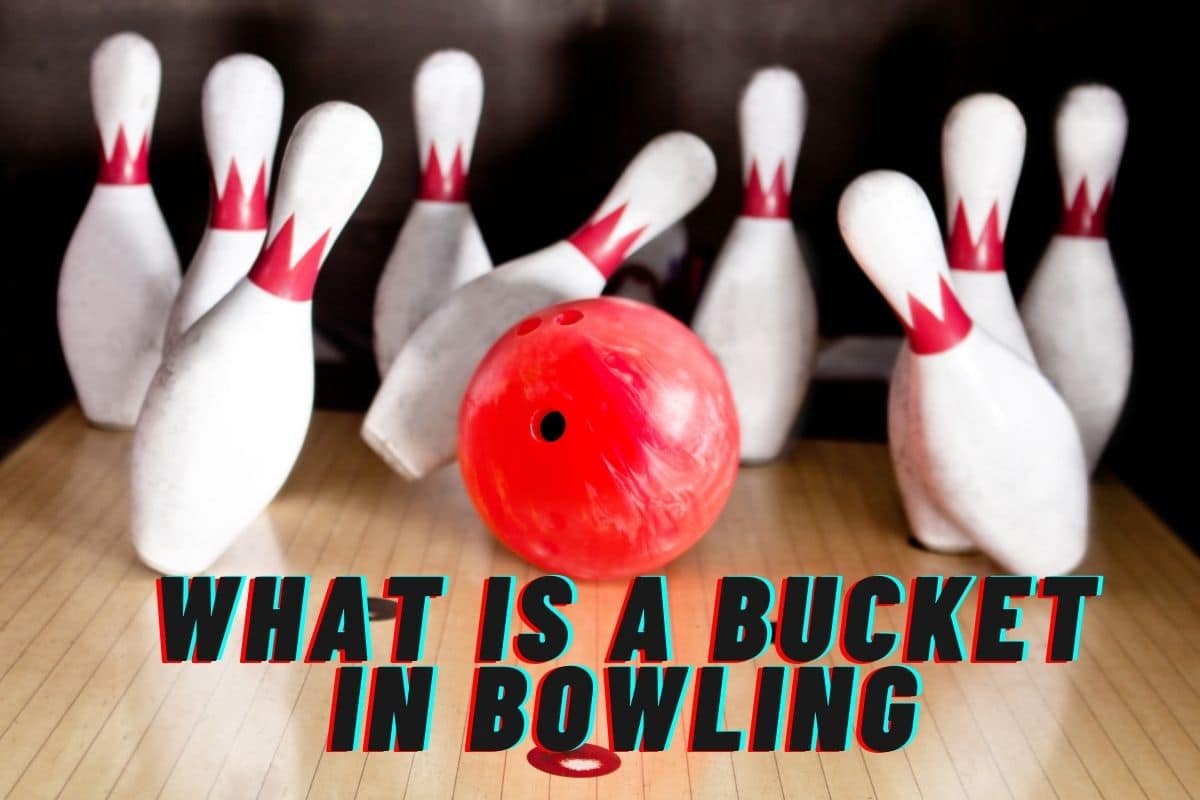What is a Bucket in Bowling: Bucket Types
Bowling is fun but confusing when you aren’t familiar with some of the terminologies used in the sport. A bucket is a unique form of spare where you are left with four pins standing, forming the shape of a diamond. A spare occurs when you fall short of knocking down all the 10 pins on your first shot.
The particular spare formed after the 4 pins remain takes the shape of a bucket, hence the name. A cluster of 3 pins left standing in some areas is also called a bucket. Read on to learn the available types of buckets in bowling and how to score one.
Types of Bowling Buckets

Bowlers encounter different types of buckets during their play. They include;
A. 2, 4, 5, 8 Bucket
This bucket consists of 2, 4, 5, and 8 pins still standing and ought to be knocked down to achieve a spare. The 2, 4, 5, and 8 buckets is the most common among right-handed bowling professionals.
B. 3, 5, 6, 9 Bucket
This is a common type of bucket among left-handed bowlers. It occurs when you have a cluster of 4 pins standing. These pins are the numbers 3, 5, 6, and 9.
C. 1, 2, 3, 5 Bucket
This bucket has pins 1, 2, 3, and 5 standing. It is the rarest and least type of bucket in bowling. Traditionally, most bowlers aim their first shot on a pocket with the leading pin.
Types of Spares You Might Come Across

There are difficult spares that you might encounter while bowling. They include;
- The Baby Split: It occurs when the 2nd and 7th pins are on the board.
- The 7-10 split: This is a tough split. It leaves the furthermost pins on each side (the 7th and 10th pins) standing. This spare is also called a bedpost.
- The Greek Church: This spare occurs when the 4th, 6th, 7th, 9th, and 10th pins are the only pins standing after a player’s first throw. Few bowlers have been able to pick up this spare, making it a highly sought-after spare within the bowling community.
- The Big Four: This split occurs when the 4th, 10th, 6th, and 7th pins are left standing. In other words, this split is called Golden Gate Split.
How to Score a Bucket

Buckets are not the easiest to score, but the score is achievable with the correct technique, pinpoint precision, and some luck! Here are easy tips to help you clear a bucket;
- Knock down the head pin straight-on: This strategy is ideal for straight bowlers. If you hit the headpin (the pin in front of others) at an angle, chances are high that it's the only pin you’ll end up knocking off, and the rest will go down through deflection. You’re likely to achieve this using a plastic bowling ball (it doesn’t have a higher ability to hook). Work on lining up your shot to hit the lead pin dead-on!
- Aim at hitting any of the side pins from an angle: A perfect style for bowlers who prefer hooking. Hitting one of the side pins from an angle makes it less strenuous to knock down the other pins. The best balls for this strategy are urethane and reactive resin because they are easy to hook.
Note:
1. To clear all four pins in one shot, you must produce a strong shot regardless of the technique you’ll settle for.
2. Even with the tips above, you will need frequent exercise to clear the bucket in one shot.
Tips for Picking Up Spares
Picking up spares is an integral part of achieving high bowling scores. While this does not come easy, here are tips to help you achieve it within no time;
Tip#1: Take your time: While you might be excited about taking a shot to make a spare, hold on. Rushing to take a shot can lead to errors that might cost you the spare. Instead, evaluate your position and the arrangements of the pins.

Tip#2: Watch your stance: Keep your feet in the appropriate position before making a shot. Throwing the ball from the correct position improves your accuracy and gives your ball more rolling power.
You might also need to adjust your stance to the right or left depending on the pins left standing.
Tip#3: Face your spare: Realign your body to face the spare! You can draw an imaginary line straight from the pin to your ball and shoulder. Thus, you will maintain a straight swing path toward your spare while swinging your arm.
Tip#4: Practice: You will become better at picking up spares if you practice. Go to the bowling center and practice picking up spares today!
Bowling Terminologies That You Need to Know

Bowling has a lot of jargon that might be confusing to newbies. Here are some of the terms that you need to familiarize yourself with;
- Lane: It is the playing facet of the bowling alley. Most bowling alleys are 42 inches wide and 60 feet long.
- Pin deck: This is at the end of the lane, where pins are placed before bowlers make their shots.
- Strike: It occurs when you knock down all pins in your first shot.
- Split: This situation occurs when 2 groups of pins are left standing with a space between them.
- Turkey: A turkey occurs when you shoot 3 strikes consecutively.
- Gutter: A trench was found on either side of the lane. Ensure your ball does not fall into the gutter; otherwise, it won’t roll back onto the lane.
- A gutter ball: This is a ball that falls into the gutter and results in a zero score.
- Foul: Just like any other game, bowling has a foul. It occurs when you come into contact with the lane while throwing your ball. When this occurs, your throw is ignored, and you won’t earn any points.
Conclusion
Bowling continues to be an attractive recreational activity for people of all ages. A bucket in bowling is achieved when a unique type of spare leaves four pins in the shape of a diamond. Convert the buckets and pick up more spares to earn more points in your next bowling match.





![Can you Bowl while pregnant? [Is It Safe?]](https://www.bowlingknowledge.com/wp-content/uploads/2023/01/Can-you-Bowl-while-pregnant-768x512.jpg)
